Navigating the various collaborative tools available can be daunting when seeking the perfect fit for your needs. The ideal solution facilitates seamless collaboration, enabling multiple users to contribute simultaneously, share feedback, and collectively craft visually stunning and functional designs. Look no further! Drawing from my extensive experience in product management, where I’ve overseen countless projects across various platforms within remote teams, I’m here to provide insights into the top collaborative design software options.
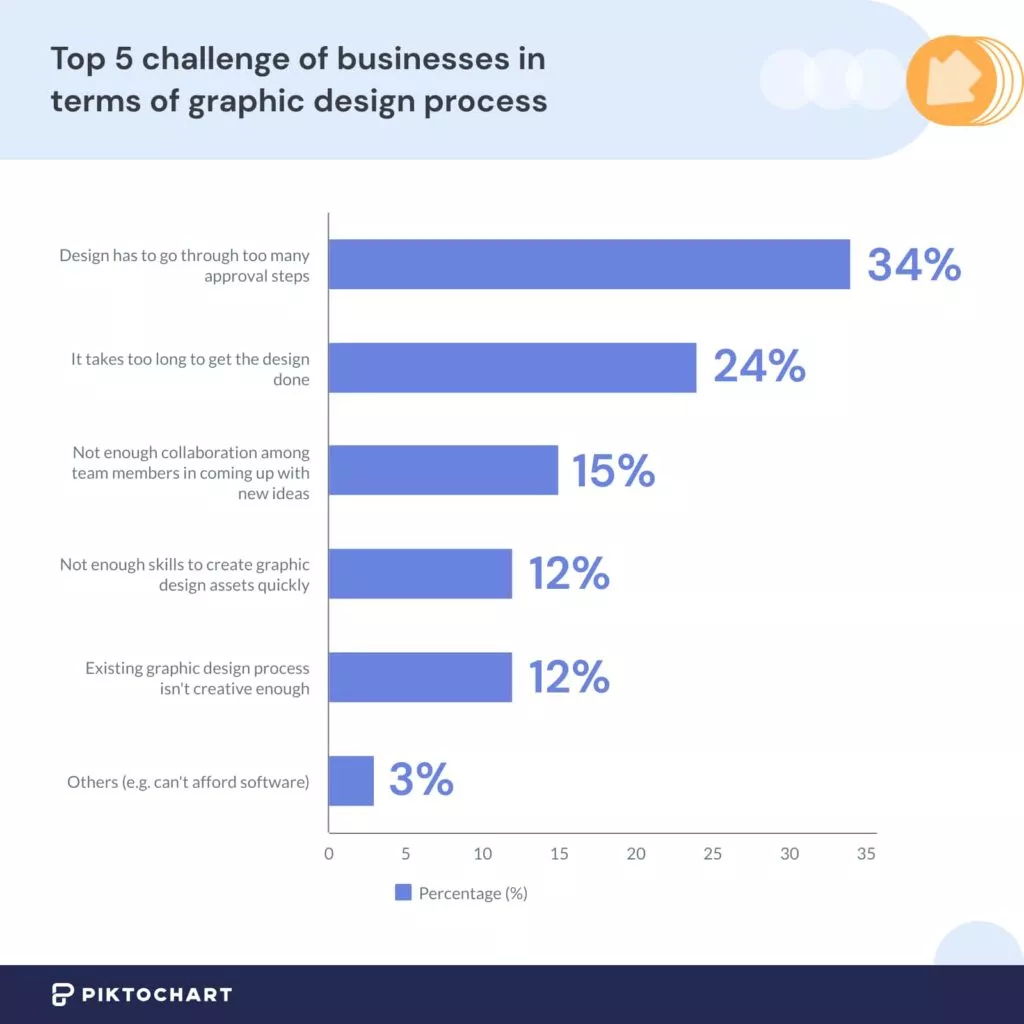
What exactly is collaborative design software?
Collaborative design software is a digital platform tailored to support the collaborative aspects inherent in the design process. It serves as a hub where multiple users can collaborate on design projects, offering an array of tools and features designed in order to facilitate real-time collaboration, exchange of feedback, and the creation of cohesive and well-coordinated designs.
These platforms typically incorporate functionalities such as version control, feedback management, proofing, and collaboration tools. Such features streamline the iterative design process, allowing teams to work more efficiently and collectively contribute to the development of high-quality and visually captivating designs.
Benefits of Collaborative Design Softwares:
- Increased productivity and efficiency: Teams can work together in real time, reducing communication delays and iterations.
- Improved communication and collaboration: It facilitates the sharing of ideas, feedback, and files, fostering better collaboration among team members.
- Better project management: Managers can monitor progress, assign tasks, and track changes in real time, ensuring projects stay on track.
- Enhanced creativity and innovation: Team members can share ideas and receive feedback, leading to more innovative designs.
- Improved quality: Errors can be caught and revisions made quickly, resulting in higher-quality designs.
- Cost savings: Traditional expenses like travel and printing can be reduced or eliminated.
Top Collaborative Design Softwares of 2024:
1. Picmaker
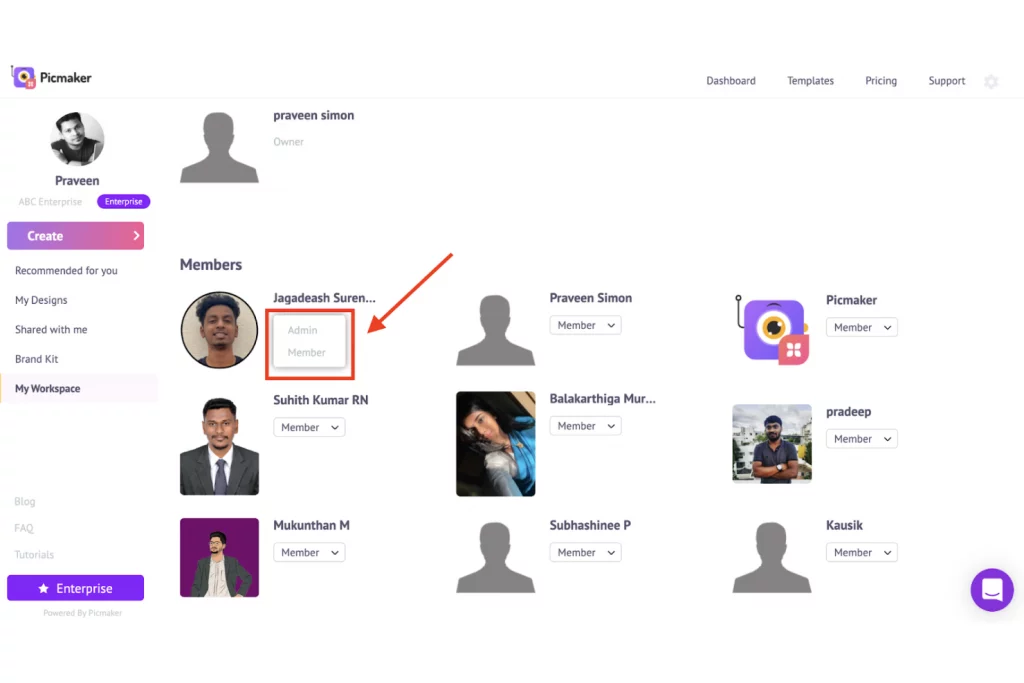
Picmaker stands out as an exceptional online graphic design platform, catering to businesses, marketers, and individuals seeking to craft professional and visually appealing visuals with ease. Powered by advanced AI technology, Picmaker empowers users to swiftly create high-quality designs, even without extensive design experience.
The standout feature of Picmaker is its AI-powered design assistant, a tool that revolutionizes the design process. With this feature, users can enter their design specifications, and the AI generates a plethora of design options within minutes. Leveraging principles of color theory, typography, and layout, the AI ensures that the designs not only meet but exceed user expectations, saving valuable time and guaranteeing top-notch quality, irrespective of the user’s design proficiency.
In addition to its AI capabilities, Picmaker offers a comprehensive suite of collaboration features tailored to streamline teamwork. From real-time collaboration and commenting to sharing and accessing design templates, Picmaker facilitates seamless collaboration among team members. The platform also boasts revision history functionality, allowing users to track changes and export designs in various formats. Whether working in the same location or remotely, Picmaker’s collaboration tools empower teams to create top-quality designs effortlessly.
Standout Features and Integrations:
- Brand kits for consistent branding
- Extensive library of icons and illustrations
- Powerful background remover tool
- Instant design enhancement with the MAD button
- Diverse selection of templates and fonts
- Support for multiple file formats
- Creative elements such as shapes, frames, and photo effects
- Customizable stickers with the sticker maker
- Simplified resizing with the one-click resizing tool
Pros:
- Intuitive user interface for ease of use
- Seamless design file-sharing capabilities
- Ideal for small teams and freelancers
Cons:
- Limited real-time collaboration features
- Absence of integration with communication tools
2. Invision
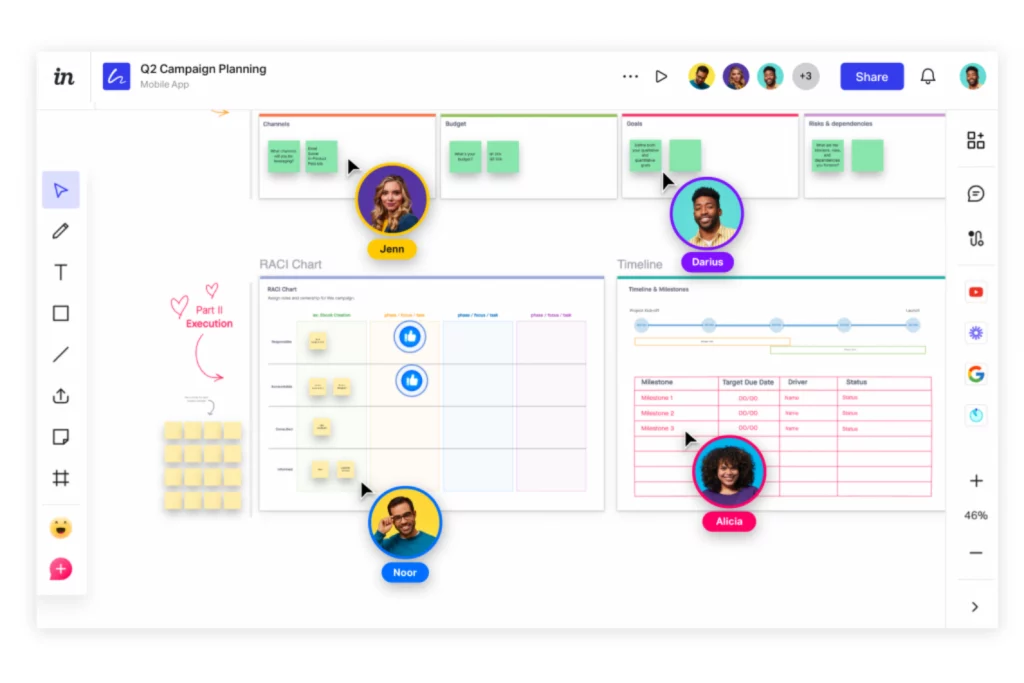
InVision stands as a leading digital product design platform, offering a robust suite of tools designed to facilitate the creation, prototyping, and collaboration of design projects within teams.
Why InVision is My Pick: InVision’s standout feature lies in its design handoff functionality, which streamlines the transition from design to development. This feature empowers developers to access design specs, assets, and code snippets directly in the software, eliminating the need for manual handoff processes. With InVision, developers can focus their efforts on building the product rather than recreating designs or deciphering specifications. Ideal for product design teams seeking comprehensive tools to optimize the entire design process, InVision seamlessly integrates with popular design and project management platforms. Its intuitive drag-and-drop interface ensures easy collaboration and efficient design feedback among team members.
Standout Features and Integrations:
- Robust commenting system
- Public share links for easy access
- Custom freehand templates
- Prototyping capabilities
- Seamless integration with other design and project management tools
Pros:
- User-friendly interface
- Scalability for teams of all sizes
- Responsive support team
Cons:
- Occasional slow page loading times
- Some users report occasional glitches
Get your dose of design inspiration here.
3. Balsamiq
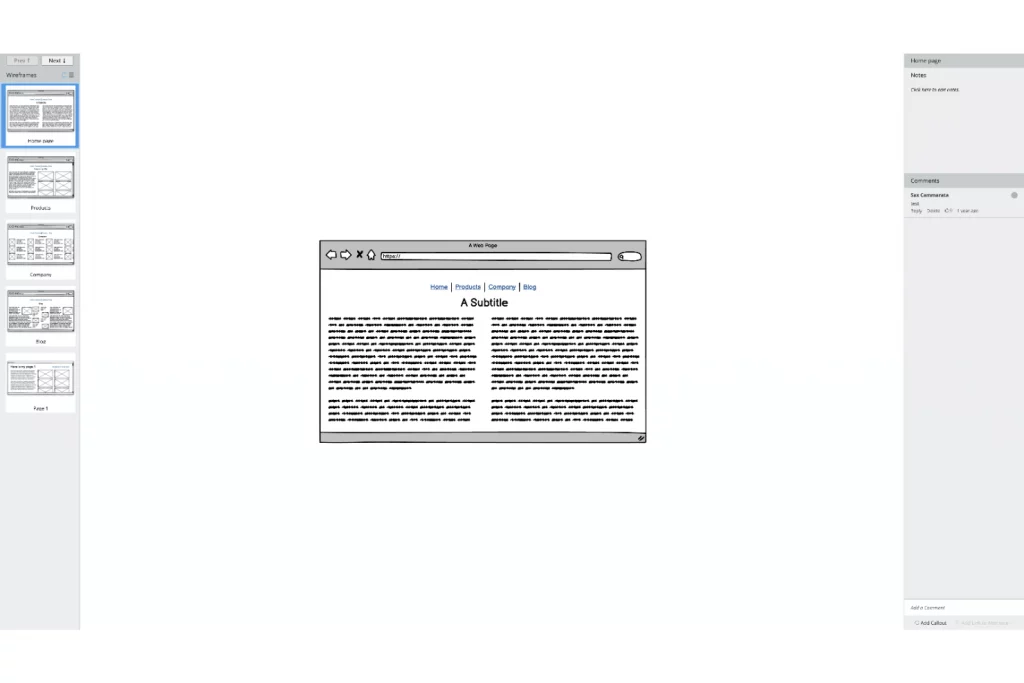
Balsamiq earns its place as a popular wireframing tool, renowned for its simplicity and effectiveness in generating mockups for software and websites. Its simple interface makes it an excellent choice for both novice and experienced users alike.
Why I Picked Balsamiq: One of Balsamiq’s standout features is its built-in presentation tools, enabling users to showcase their mockups professionally and efficiently. With Balsamiq, users can create interactive prototypes, add annotations, and craft custom presentations for viewing across various devices. The platform simplifies the sharing process, allowing users to disseminate mockups and gather real-time feedback from stakeholders, clients, and team members effortlessly.
Standout Features and Integrations:
- Exporting and importing capabilities
- Feedback management tools
- Version control functionality
- UI prototyping features
Pros:
- Strong real-time collaboration features
- Intuitive interface
- Affordable pricing options
Cons:
- Limited export options
- Minimal animation features
4. Avocode
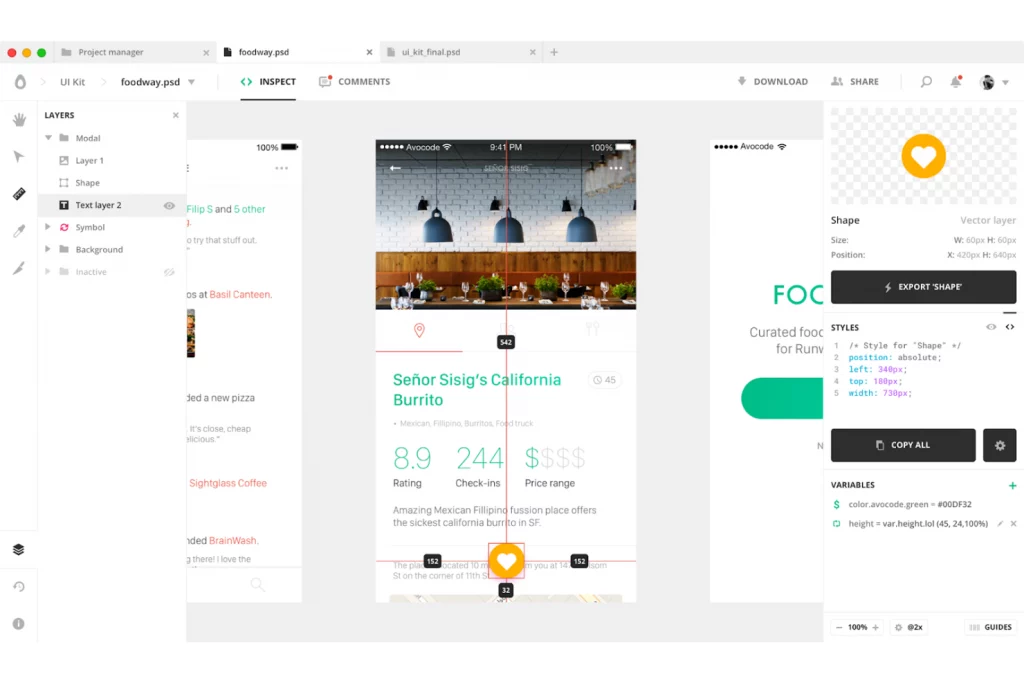
Avocode stands as a premier choice for design collaboration software, fostering seamless teamwork among graphic designers, web developers, and various other creative professionals.
Why Avocode Caught My Attention: Avocode boasts an exceptional feature – automatic tracking of design file changes, simplifying the process of comparing and reverting to previous versions effortlessly. This feature proves invaluable in scenarios where multiple team members collaborate on a project, ensuring seamless tracking of changes and revisions throughout the design process. Moreover, Avocode facilitates the generation of code snippets directly from design files and supports several file types, including Sketch, Adobe XD, and Photoshop.
Standout Features and Integrations:
- Synchronous editing capabilities
- Group calendars and discussion boards for streamlined communication
- Integration with popular platforms like Dropbox, Jira, and Slack
Pros:
- Responsive customer support ensures swift assistance
- Effortless file export and code snippet conversion enhance workflow efficiency
Cons:
- Interface navigation may pose challenges for some users
- Performance issues may arise with large files
5. Simplified
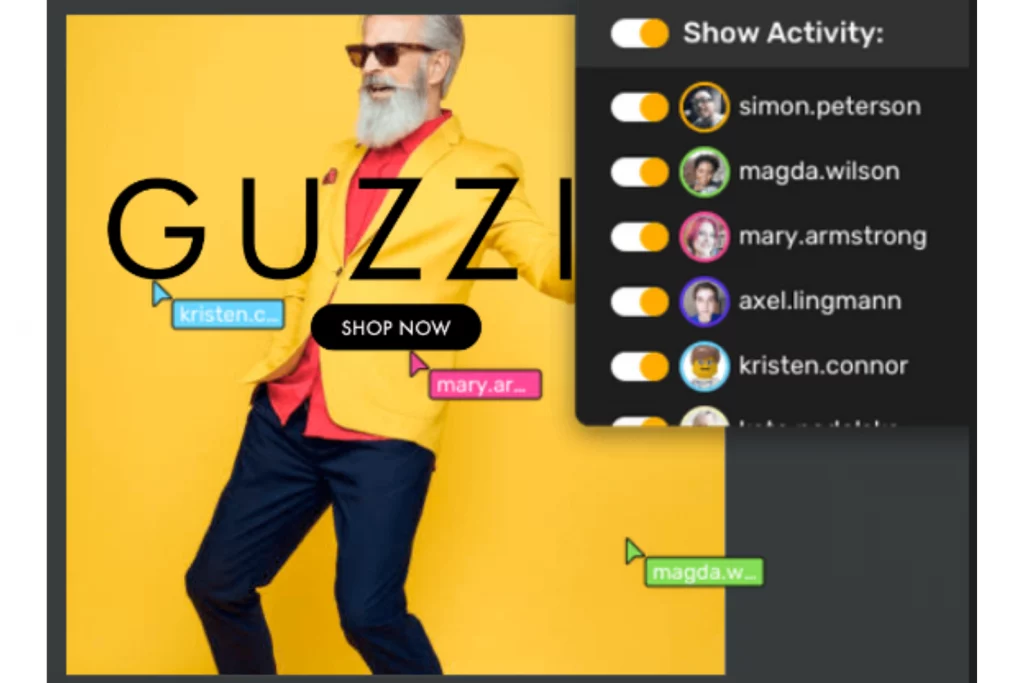
Simplified is a design software tailored to meet the needs of businesses and creative professionals seeking to streamline the design approval process. With the intuitive interface and robust collaboration tools, Simplified emerges as the preferred solution for teams aiming to expedite the design review process.
Why Simplified Stands Out The standout feature of Simplified lies in its unlimited workspaces, enabling users to create and manage multiple workspaces, each dedicated to specific team members and design projects. This functionality proves invaluable for agencies, design studios, or in-house creative teams handling multiple projects simultaneously. By offering unlimited workspaces, Simplified empowers users to collaborate with numerous clients and stakeholders, facilitating efficient project management without compromising organization or productivity.
Additionally, Simplified boasts an array of other notable features, including real-time collaboration tools and the ability to secure instant approvals on designs. These features contribute to minimizing team communication errors and ensuring the timely delivery of high-quality designs.
Simplified’s Key Features and Integrations:
- Unlimited workspaces for enhanced project management
- Real-time comments for seamless collaboration
- Workflow folders for organized design processes
- Content import/export and management capabilities
- Integration with popular platforms such as Facebook, Google Docs, and WordPress
Pros:
- User-friendly interface enhances usability
- Workflow folders aid in maintaining organized design processes
Cons:
- Limited advanced design features may restrict creative freedom
- Customization options are somewhat limited
6. Zeplin
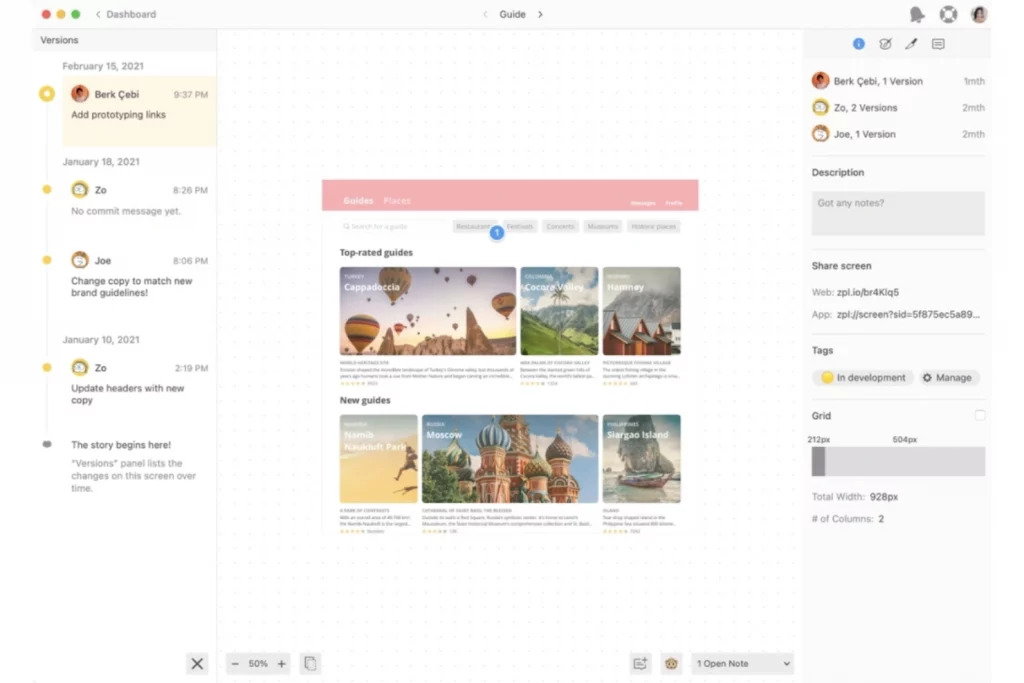
Zeplin offers a comprehensive platform designed to facilitate the structured and organized sharing of design specifications, assets, and resources between designers and developers.
Why Zeplin Stands Out: A standout feature of Zeplin is its automatic generation of CSS snippets based on design specifications. This feature significantly streamlines the process for developers, eliminating the need to manually translate design specs into CSS code. By just copying and pasting the generated code snippets, developers can ensure consistency between design and development stages while saving considerable time and effort.
Targeted primarily at digital product teams, designers, developers, and project managers, Zeplin serves as a collaborative platform for facilitating the seamless design-to-development handoff process. Its essential features include code snippet generation and integration with design tools like Sketch, Figma, and Adobe XD.
Additionally, Zeplin offers a range of supplementary features such as commenting and versioning, making it a comprehensive solution for digital product teams.
Zeplin’s Key Features and Integrations:
- User flows for enhanced project visualization
- Design version control to track changes and revisions
- Global style guides to ensure consistency across designs
- Integration with leading design and project management tools
Pros:
- Facilitates real-time collaboration between designers and developers
- Supports a wide range of file formats
- Style guide feature promotes design consistency
Cons:
- Some users experience speed-related issues
- Pricing may be relatively high for small teams
7. Govisually
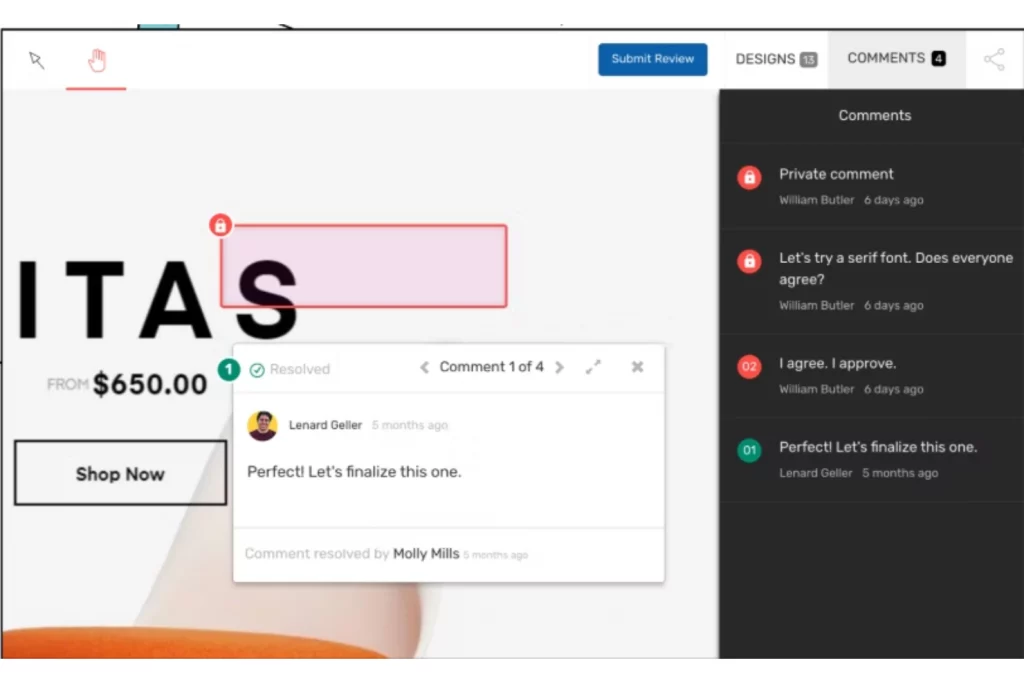
GoVisually stands out as an online proofing and collaboration tool tailored for graphic designers, marketing teams, and creative agencies, aiming to streamline the design review process and foster seamless collaboration among team members.
Reasons for Choosing GoVisually: A standout feature of GoVisually is its provision of a visual timeline, offering users an insightful glimpse into the progression of a design project over time. This timeline showcases all iterations of the design alongside associated comments and feedback, providing a comprehensive overview of the project’s evolution. This feature proves invaluable for tracking project milestones and ensuring alignment with project objectives.
GoVisually is particularly well-suited for graphic designers, marketing teams, and creative agencies seeking efficient collaboration on design projects involving multiple stakeholders. Its user-friendly interface and robust design review and feedback platform cater to these needs effectively.
Notable features of GoVisually include the visual timeline, detailed activity log, built-in version control system, all contributing to streamlining the design review process and ensuring real-time access to the latest design iterations.
Key Features and Integrations of GoVisually:
- Collaboration tools facilitating seamless teamwork
- Commenting/notes feature for precise feedback
- Document management capabilities for organized project handling
- Integration with project management tools such as Airtable, Asana, and Trello
Pros:
- Intuitive interface enhancing user experience
- Centralized platform for efficient project management
- Robust collaboration tools for enhanced productivity
Cons:
- Occasional performance issues reported by some users
- Limited customization options and flexibility in certain aspects
Factors to Consider Before Choosing a Collaborative Design Software:
- Usability
I assessed the usability of each tool, ensuring it was user-friendly and intuitive for both designers and non-designers.
- Standout Features
I sought out software with standout features like real-time collaboration, version control, and easy feedback management.
- Software Integrations
I considered each tool’s ability to integrate with other commonly used software and platforms, like Sketch, Adobe Creative Suite, and project management tools.
- Pricing
I also analyzed each platform’s pricing model and assessed its overall value for the features offered, prioritizing tools with a free plan and flexible pricing options.
Conclusion:
Enabling seamless communication among team members is paramount for enhancing productivity and output quality. Collaborative design tools play a crucial role in fostering effective teamwork by facilitating real-time communication, feedback exchange, and streamlined project management. By leveraging these tools, teams can significantly improve their efficiency and creativity, ultimately leading to better-designed outcomes.
FAQs on Collaborative Design Softwares:
Can non-design team members benefit from collaborative design tools?
Yes, collaborative design tools are not limited to designers alone. Non-design team members such as project managers, developers, and stakeholders can also benefit from these tools by providing feedback, tracking project progress, and staying informed about design changes in real time.
How do collaborative design tools impact project timelines?
Collaborative design tools streamline the design process by enabling faster communication, iteration, and feedback exchange. This can lead to shorter project timelines as teams can resolve issues and make decisions more efficiently, ultimately accelerating the design process.
Are collaborative design tools suitable for remote teams?
Yes, collaborative design tools are highly suitable for remote teams as they facilitate seamless communication and collaboration regardless of geographical location. These tools enable remote team members to work together effectively, share ideas, and collaborate on design projects in real-time.



